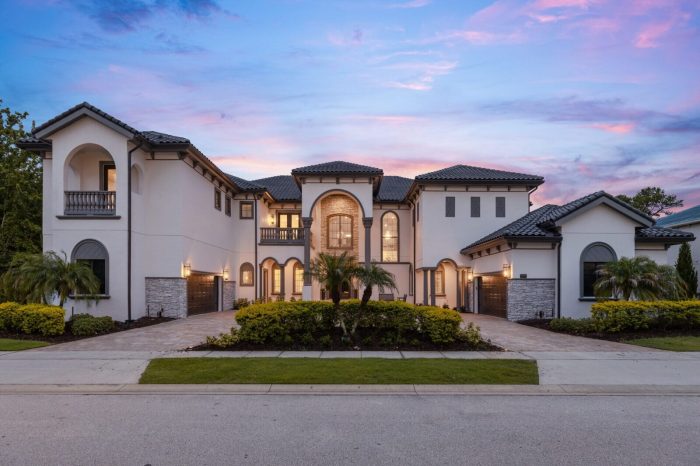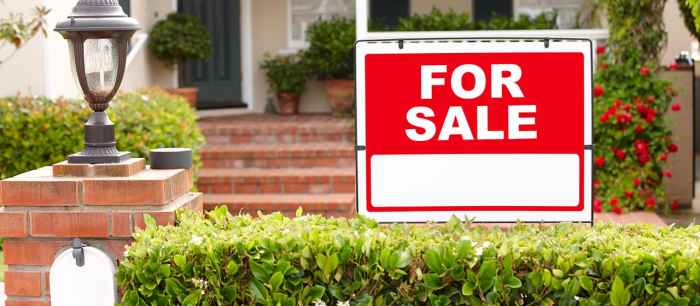House in Rent A Comprehensive Guide
Types of Rental Houses
House in rent – Choosing the right rental house depends heavily on your lifestyle, budget, and needs. Understanding the different types available is crucial for making an informed decision. This section will explore various rental housing options, highlighting their features, advantages, disadvantages, and typical costs.
Rental House Types and Their Characteristics
Several types of rental properties cater to diverse preferences and financial situations. The following table provides a comparison:
| Type | Typical Features | Advantages | Disadvantages |
|---|---|---|---|
| Apartments | Smaller living space, often part of a larger complex, shared amenities (pool, gym), less maintenance | Affordable, convenient amenities, less maintenance responsibility | Limited space, potential noise from neighbors, less privacy |
| Townhouses | Multi-level dwelling, often with private entrance and yard, shared walls with neighbors | More space than apartments, private outdoor space, often located in desirable areas | Higher rent than apartments, shared walls can lead to noise issues, more maintenance responsibility |
| Single-Family Homes | Standalone house, typically with a yard, garage, and more space | Maximum privacy, ample space, often in quieter neighborhoods | Highest rent, significant maintenance responsibility, potentially higher utility costs |
| Condominiums (Condos) | Individually owned units within a larger complex, shared amenities, often more upscale | Amenities, potentially more secure, often located in desirable areas | Higher rent than apartments, homeowner association fees, less control over exterior maintenance |
Rental Costs Across Different House Types and Locations
Rental costs vary significantly based on location, size, amenities, and the type of property. For example, a one-bedroom apartment in a major city center will likely command a much higher rent than a similar unit in a suburban area. Single-family homes typically have the highest rental costs, followed by townhouses and condos. Apartments generally represent the most affordable option.
Illustrative examples: A one-bedroom apartment in New York City might cost $3,000 per month, while a similar unit in a smaller city could cost $1,200. A three-bedroom townhouse in a desirable suburban neighborhood might range from $2,500 to $4,000, while a single-family home in the same area could exceed $5,000.
Finding Rental Houses
Locating the ideal rental property requires a strategic approach. Utilizing various resources and employing effective search techniques can streamline the process.
Online Platforms and Resources for Finding Rental Properties
Numerous online platforms and resources facilitate rental property searches. Popular options include Zillow, Trulia, Apartments.com, Realtor.com, and Craigslist. Each platform offers varying features, such as map-based searches, detailed property listings, and tenant reviews.
Strategies for Effective Rental Property Searches
To effectively search for rental houses, refine your criteria based on location, budget, desired features, and preferred property type. Utilize the advanced search filters available on most online platforms to narrow down results. Consider using s that reflect your specific needs (e.g., “pet-friendly,” “parking included,” “stainless steel appliances”).
Step-by-Step Guide for Finding a Suitable Property
- Define your needs and budget.
- Research different neighborhoods and locations.
- Utilize online platforms and resources to search for properties.
- Schedule viewings of properties that meet your criteria.
- Compare properties and assess their suitability.
- Submit a rental application.
- Negotiate lease terms.
- Sign the lease agreement.
Rental Agreements and Leases

Source: magicalvacationhomes.com
A comprehensive understanding of lease agreements is vital for renters. This section will cover key components and clauses.
Key Components of a Standard Rental Lease Agreement
Standard lease agreements typically include the names of the landlord and tenant, the property address, the lease term, the monthly rent amount, payment terms, security deposit information, responsibilities for repairs and maintenance, and clauses related to pet ownership, subletting, and early termination.
Common Clauses and Terms Renters Should Understand and Negotiate
Renters should carefully review clauses related to late fees, pet fees, lease renewal options, and the process for addressing repairs or maintenance issues. Negotiating certain terms, such as the security deposit amount or pet fees, may be possible depending on the landlord’s policies and local regulations.
Checklist of Items Renters Should Review Before Signing a Lease
- Rental amount and payment terms
- Lease duration
- Security deposit amount and refund policy
- Pet policies
- Utilities included/excluded
- Repair and maintenance responsibilities
- Late fee policies
- Subletting rules
- Early termination clause
Rental Costs and Budgeting
Beyond the monthly rent, several other costs contribute to the overall expense of renting. Careful budgeting is essential to ensure financial stability.
Breakdown of Typical Rental Costs Beyond Monthly Rent

Source: hireahelper.com
In addition to monthly rent, renters should factor in costs such as utilities (electricity, gas, water, internet), security deposit, pet fees (if applicable), renter’s insurance, and potential moving expenses. The total cost of renting can significantly exceed the monthly rent amount.
Sample Budget for a Renter
A sample budget might allocate 30% of income to housing (rent and related costs), 20% to food, 15% to transportation, 10% to savings, 10% to debt repayment, and 15% to other expenses. This is a general guideline, and the specific allocation will depend on individual circumstances and priorities. For example, someone with a higher income might allocate a smaller percentage to housing and a larger percentage to savings.
Calculating the Affordability of a Rental Property
A general rule of thumb is that rent should not exceed 30% of your gross monthly income. To determine affordability, calculate your gross monthly income, then multiply it by 0.3. Compare this figure to the total estimated monthly rental costs (rent plus utilities and other associated expenses). If the total rental costs exceed 30% of your income, the property might be unaffordable.
Tenant Rights and Responsibilities

Source: site-static.com
Understanding tenant rights and responsibilities is crucial for a positive rental experience. This section will Artikel key aspects.
Tenant Rights Regarding Property Maintenance, Repairs, and Privacy
Tenants have the right to a habitable dwelling, free from significant safety hazards. Landlords are typically responsible for major repairs, while tenants may be responsible for minor maintenance. Tenants also have the right to privacy within their rental unit, with limited exceptions for inspections or emergencies.
Handling Disputes with Landlords, House in rent
Disputes with landlords should ideally be addressed through communication and negotiation. If negotiation fails, mediation or legal action may be necessary. Local tenant rights organizations or legal aid services can provide assistance.
Resources for Resolving Conflicts or Addressing Unfair Practices
Numerous resources exist to support tenants in resolving conflicts or addressing unfair practices. These include local tenant rights organizations, legal aid societies, and government agencies responsible for housing regulations. Online resources can also provide valuable information and guidance.
Moving and Settling In
Moving into a new rental property involves several steps to ensure a smooth transition.
Comprehensive Checklist for Moving into a New Rental Property
- Schedule utilities connections.
- Forward mail.
- Perform a thorough walkthrough of the property.
- Document any existing damages.
- Change locks (if desired).
- Unpack and organize belongings.
- Familiarize yourself with the neighborhood.
Strategies for Protecting Personal Belongings During a Move
Properly packing and securing belongings minimizes the risk of damage during the move. Use sturdy boxes, wrap fragile items carefully, and label boxes clearly. Consider using professional movers for large or complex moves.
Tips for Efficiently Unpacking and Settling into a New Rental Home
Prioritize unpacking essential items first. Organize belongings logically to create a functional and comfortable living space. Take time to familiarize yourself with the new neighborhood and local amenities.
Maintaining a Rental Property: House In Rent
Routine maintenance contributes to a comfortable and functional living environment. Understanding responsibilities is key.
Guide to Routine Maintenance Tasks for Tenants
Tenants are typically responsible for minor maintenance tasks, such as cleaning, changing light bulbs, and addressing minor plumbing issues. Regular cleaning and preventative maintenance can help prevent more significant problems.
Tenant vs. Landlord Responsibilities for Repairs and Maintenance
Landlords are typically responsible for major repairs, such as fixing broken appliances, addressing structural issues, and ensuring the property’s safety. Tenants are typically responsible for minor repairs and maintaining the cleanliness of the property.
Potential Problems, Identification, and When to Contact the Landlord
Examples of issues requiring landlord attention include major plumbing leaks, malfunctioning heating/cooling systems, and significant structural damage. If a problem is beyond a tenant’s ability to fix or poses a safety risk, contacting the landlord promptly is crucial.
Moving Out of a Rental Property
Vacating a rental property requires careful planning and adherence to lease terms.
Steps Involved in Vacating a Rental Property
- Provide proper notice to the landlord as specified in the lease.
- Schedule a final walkthrough with the landlord.
- Clean the property thoroughly.
- Complete all necessary paperwork.
- Forward your forwarding address.
Obtaining a Security Deposit Refund
Landlords are generally required to return the security deposit within a specified timeframe after the tenant vacates, less any deductions for damages beyond normal wear and tear. Documentation is key; retain copies of the initial walkthrough and the final walkthrough.
Importance of Providing Proper Notice to the Landlord
Providing adequate notice allows the landlord sufficient time to find a new tenant and minimizes potential disputes regarding lease terms. Failure to provide proper notice could result in financial penalties.
FAQ Explained
What is a security deposit, and how does it work?
A security deposit is a sum of money paid upfront by the tenant to protect the landlord against damages to the property. It’s typically returned at the end of the lease, minus any deductions for damages beyond normal wear and tear.
How much notice am I required to give my landlord before moving out?
The required notice period varies depending on your lease agreement. It’s usually specified in the lease, but commonly ranges from 30 to 60 days.
What are my rights if my landlord fails to make necessary repairs?
Your rights vary by location and lease agreement. Generally, you can contact your local housing authority or tenant rights organization to report the issue and seek assistance in getting the repairs completed.
Can I break my lease early?
Breaking a lease early can result in penalties, as Artikeld in your lease agreement. You may be able to negotiate with your landlord, but early termination typically involves financial consequences.
What should I do if I have a dispute with my landlord?
Attempt to resolve the issue amicably first. If that fails, consider mediation or seek legal advice. Your local tenant rights organization can offer guidance and resources.




















